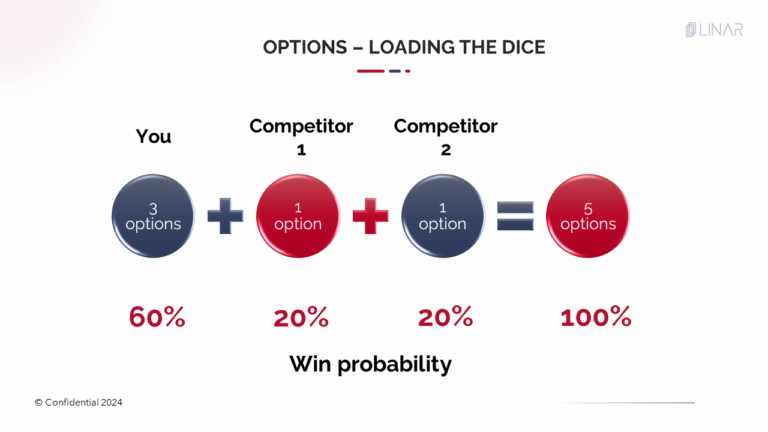Opportunity knocks…
Congratulations! The previous two week’s have paid off. You’ve nurtured your lead to the point at which this can be counted as a fully fledged sales opportunity. By even getting to this stage in the sales funnel, you’ve increased your chances of success from 2-8% to 25-35%.
Now the hard work starts. It’s likely that you’ll now be required to submit some form of written proposal which clearly articulates your product/service offering and the associated fees to your target customer. You need to shape everything you’ve learned to date and mould an offering that speaks directly to your customers core needs.
Welcome to the opportunity stage of the sales funnel. Here’s our thoughts on loading the dice in your favour. Enjoy.
#1. Define the problem
Far too many Request For Proposals (RFPs) are flicked instantly to the M&BD team who are then asked to pull something together without knowledge of the most basic requirement – understanding the customer problem or need. Unsurprisingly, a draft is developed, likely based on previous pitches, full of marketing fluff (“Our firm was established in 1896 and has offices in 23 jurisdictions”) and lengthy experience lists (“[firm name] advised [random client] on the outsourcing of their global payroll system” x 20), which add precisely no value to any proposal, ever.
Before committing a single word to paper, your time, and that of your M&BD team, is much better spent probing your target customer with questions* to understand:
- What’s most important to them?
- What are their must haves?
- What does success looks like?
- What is the internal decision making process? Who has ultimate signoff?
*Many of you will be reading and thinking it’s not possible to have these conversations during a formal RFP process which involves professional procurement teams. You’re right. Which is why it is critical to have these types of conversations and nurture your contacts before any formal process is initiated.
#2. Solve the problem
Once the client problem has been clearly diagnosed, now is the time to work with your M&BD team to craft a response that provides comfort and peace of mind to your target customer that you are the ideal solution for solving their problem. Here are some techniques that work for us:
- Case studies: rather than endless lists of decades old experience, concentrate on a small number of detailed case studies which directly relate to the problem you are solving for your target customer. Each case study should answer the following simple questions:
- What was the problem?
- How did you solve it?
- What skills and expertise can you bring from that experience that will benefit your target customer?
- Referrals: proactively offer your target customer an opportunity to speak with another (preferably happy!) customer who has used you before. This provides your target with an independent view to verify the claims you are making in your proposal.
- Options: providing delivery and/or pricing options as part of your proposal increases your probability of success when in a competitive environment. How? Simple math.

Not only is this an effective way to load the dice in your favour, but it also demonstrates to your target customer that you are flexible in the way you can work with them.
#3. KY Competition
First and foremost, concentrate on your solution and how it will benefit your target customer. However, a little time brainstorming your likely competition and the areas/solutions they will be pushing will help to sharpen and focus your core messaging. Things to consider include:
- Resourcing: do they have sufficient resources to complete the job? Have there been recent team changes? Has a key team member left?
- Pricing: is their price robust? are they known for low balling?
- Service: are they partner led? Will they be responsive and put the A-team on the job?
Once the competitive landscape is understood, re read your proposal and aim to seed doubts on the competition throughout your response.





